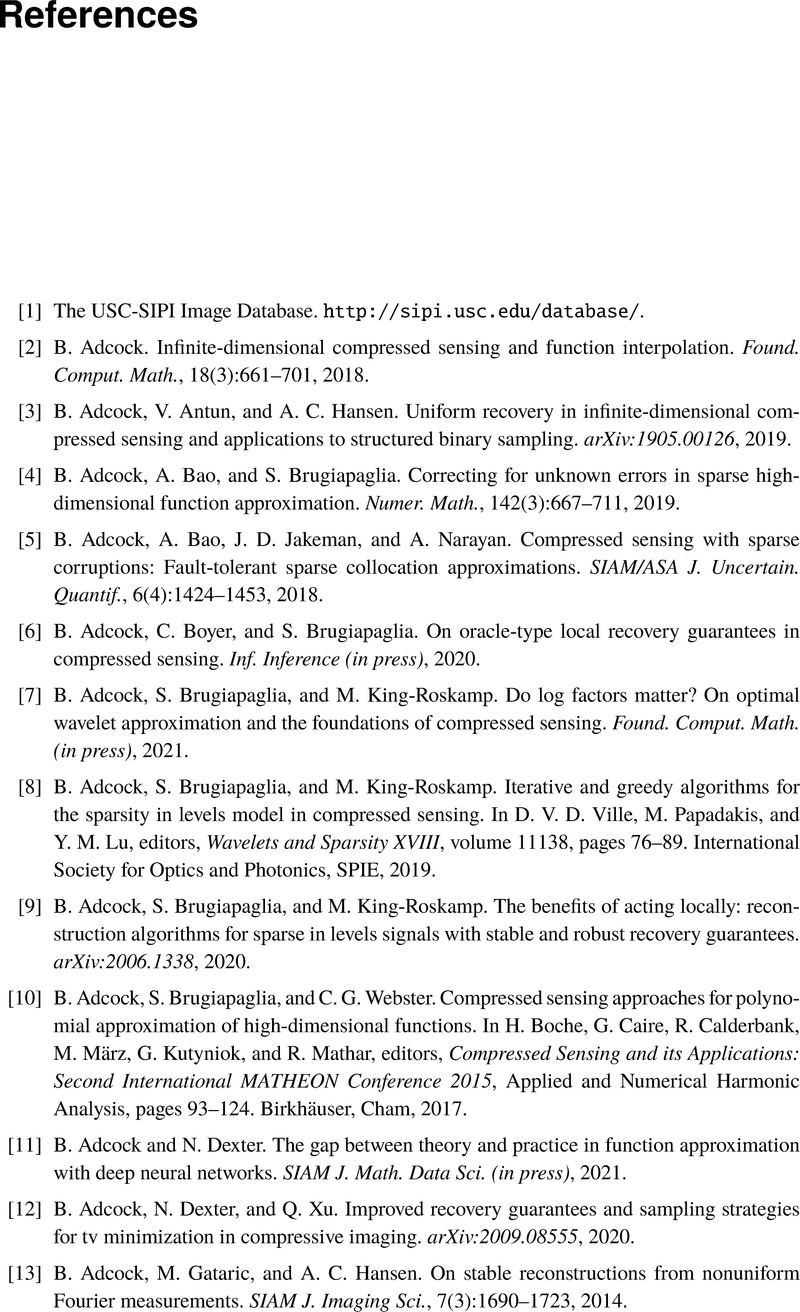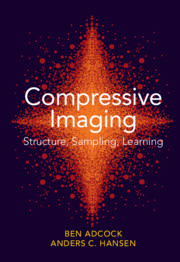Book contents
- Frontmatter
- Dedication
- Contents
- Preface
- 1 Introduction
- Part I The Essentials of Compressive Imaging
- Part II Compressed Sensing, Optimization and Wavelets
- PART III Compressed Sensing with Local Structure
- Part IV Compressed Sensing for Imaging
- Part V From Compressed Sensing to Deep Learning
- Epilogue
- Appendices
- Notation
- Abbreviations
- References
- Index
- References
References
Published online by Cambridge University Press: 16 July 2021
- Frontmatter
- Dedication
- Contents
- Preface
- 1 Introduction
- Part I The Essentials of Compressive Imaging
- Part II Compressed Sensing, Optimization and Wavelets
- PART III Compressed Sensing with Local Structure
- Part IV Compressed Sensing for Imaging
- Part V From Compressed Sensing to Deep Learning
- Epilogue
- Appendices
- Notation
- Abbreviations
- References
- Index
- References
Summary

- Type
- Chapter
- Information
- Compressive Imaging: Structure, Sampling, Learning , pp. 568 - 595Publisher: Cambridge University PressPrint publication year: 2021



